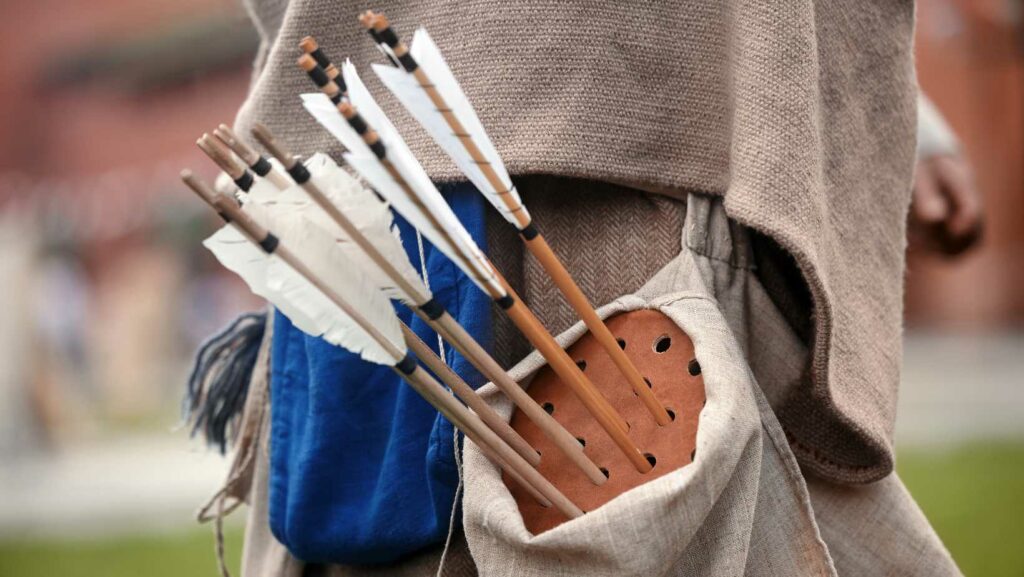Crafting arrows in the forest can be a valuable skill to possess, particularly for those who enjoy archery or engage in outdoor survival activities. Knowing how to create your own arrows from natural materials found in the forest can provide a sense of self-sufficiency and resourcefulness. In this article, I’ll guide you through the process of crafting arrows in the forest, step by step.
The first step is to gather suitable materials. Look for straight branches or saplings that are strong and flexible enough to serve as arrow shafts. Additionally, you’ll need feathers or fletchings for stabilization during flight and a sharp tip made from stone, bone, or metal for piercing your target.
How To Craft Arrows In The Forest
Choosing The Right Wood For Arrow Shafts
When it comes to crafting arrows in the forest, selecting the right wood for arrow shafts is crucial. The type of wood you choose will determine the strength, flexibility, and overall performance of your arrows. Look for trees with straight and sturdy branches that are suitable for carving into shafts. Some common woods used for arrow making include:
- White Ash: Known for its excellent combination of strength and flexibility, white ash is a popular choice among archers.
- Douglas Fir: This dense wood provides durability and stability to your arrows, making it ideal for hunting or target practice.
- Cedar: Cedar offers a lightweight option while still maintaining good strength. It’s also known for its natural resistance to rot and insect damage.
Remember to select a piece of wood that is free from knots or cracks as they can weaken the shaft. Additionally, consider the length of the branch when choosing your material; longer branches may allow you to make multiple arrows from a single piece.
Selecting Feathers For Fletching
Fletching refers to attaching feathers to an arrow’s shaft. These feathers provide stabilization during flight by creating drag on one side of the arrow. For effective fletching, choose feathers that are durable yet flexible enough to bend slightly during release.
Traditionally, three feathers were used in fletching: two shorter ones at equal distances from each other (called “hen” feathers) and one longer feather (known as the “cock” feather) placed opposite them. However, modern techniques often use synthetic materials or replace hen feathers with plastic vanes.
Consider these factors when selecting fletching materials:
- Turkey feathers: Turkey feathers are commonly used due to their availability and suitability for traditional archery.
- Plastic vanes: Plastic vanes offer durability and consistent performance in various weather conditions. They are also available in different shapes and sizes, allowing for customization based on your arrow’s purpose.
Remember to align the feathers or vanes so that they create a slight spiral along the arrow shaft. This spiral helps stabilize the arrow during flight, improving accuracy and consistency.

Selecting The Right Wood for Arrow Shafts
When it comes to crafting arrows in the forest, choosing the right wood for arrow shafts is crucial. The type of wood you use will affect the performance and durability of your arrows. Here are some key factors to consider when selecting the perfect wood for your arrow shafts:
- Strength and Flexibility: Look for woods that are strong yet flexible enough to withstand the force exerted when shooting an arrow. Examples of suitable woods include ash, cedar, spruce, and pine.
- Straightness: It’s important to choose wood that is as straight as possible to ensure accuracy when shooting. Avoid using wood with excessive knots or bends, as they can negatively impact arrow flight.
- Density: The density of the wood affects both the weight and speed of your arrows. Generally, heavier woods like oak or hickory are more suitable for hunting arrows, while lighter woods like bamboo or birch are great for target practice.
- Availability: Consider using locally available woods to minimize environmental impact and support sustainable practices in your area.
- Seasoning and Drying: Properly seasoned and dried wood is essential for crafting high-quality arrow shafts. Freshly cut wood contains a significant amount of moisture which can cause warping or splitting over time. Allow the wood to dry naturally in a cool, dry place before using it.
Remember that different types of archery require different characteristics in arrow shafts. If you’re unsure about which type of wood would be best suited for your specific needs, consult with experienced archers or seek guidance from local experts.
In conclusion, selecting the right wood for arrow shafts plays a critical role in crafting high-performance arrows in the forest. Consider factors such as strength, straightness, density, availability, and proper seasoning when making your choice. With careful selection and craftsmanship, you’ll be on your way to creating arrows that soar with accuracy and precision. Happy crafting!

